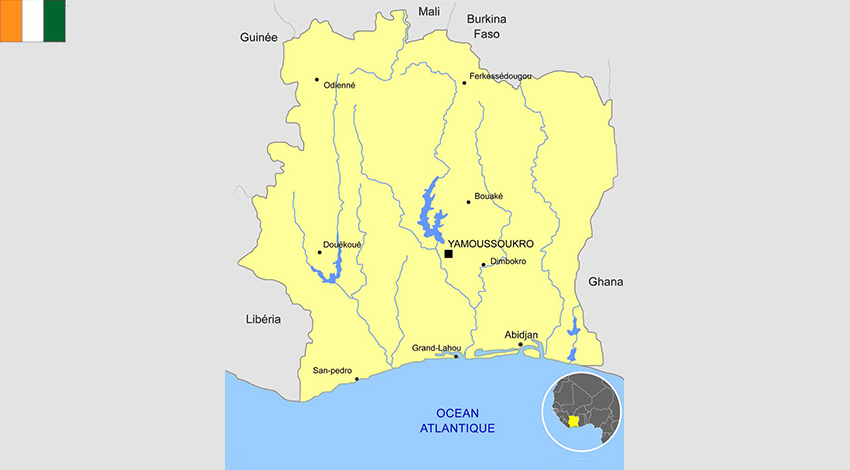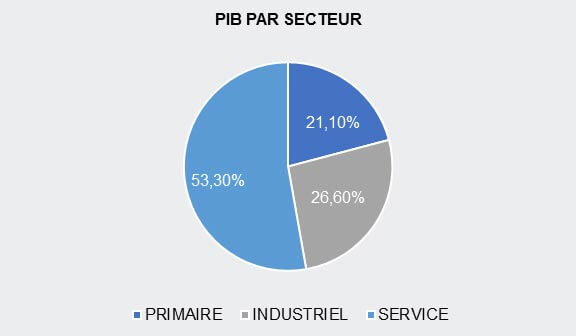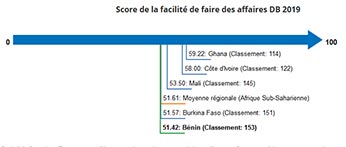
1.1 Geographic and politics characteristics of Cote d’Ivoire
Political system
Close ties to France following independence in 1960, the development of cocoa production for export, and foreign investment all made Cote d'Ivoire one of the most prosperous of the West African states but did not protect it from political turmoil.
In Ivorian constituency the president is president directly elected by absolute majority popular vote in 2 rounds if needed for a 5-year term (no term limits); election last held on 25 October 2015 (next to be held in 2020); prime minister appointed by the president; note - the 2016 constitution limits the presidential tenure to 2 terms beginning with the 2020 election; the vice president is named by the president
- Area : 322.463 km2
- Population : 26.260.582 (July 2018)
- Density : 81.43 people/km2
- Population growth rate : 2.3%
- Urban population : 50.8% (2018)
- Official language : French
International agreements
Cote d’Ivoire is part of ECOWAS and the West African Monetary Zone with Liberia, The Gambia, Ghana, Guinea Conakry, Nigeria and Sierra Leone and also member of Mano River Zone with Liberia, Guinea, and Sierra Leone.
1.2 Macroecononic Framework
1.3 Economic performance and outlook of Cote d’Ivoire
1.4 Ease of Doing Business
- Benin (capital : Porto-Novo)
- Burkina Faso (capital : Ouagadougou)
- Cape Verde (capital : Praia)
- Ivory Cost (capital : Abidjan)
- Gambia (capital : Banjul)
- Ghana (capital : Accra)
- Guinea (capital : Conakry)
- Guinea Bissau (capital : Bissau)
- Liberia (capital : Monrovia)
- Mali (capital : Bamako)
- Niger (capital : Niamey)
- Nigeria (capital : Abuja)
- Senegal (capital : Dakar)
- Sierra Leone (capital : Freetown)
- Togo (capital : Lomé)




